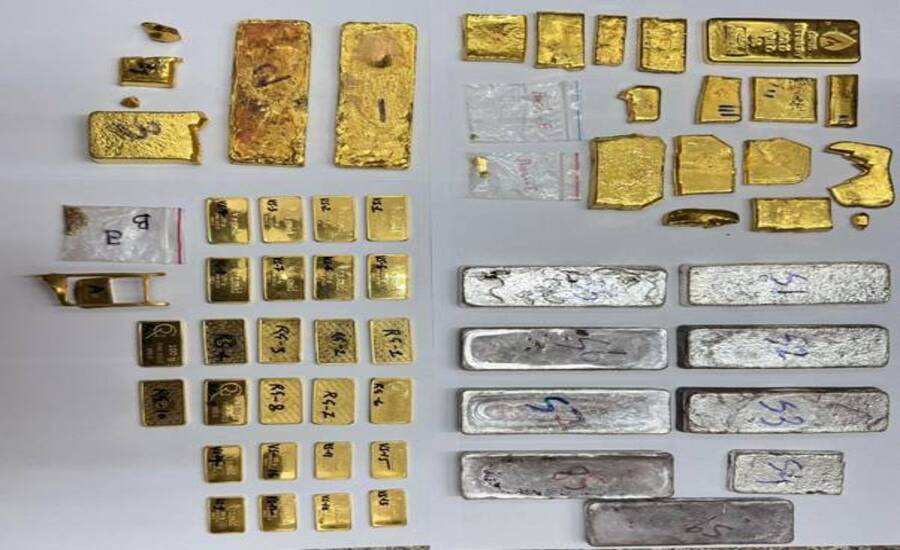Mumbai: In a high-stakes operation in Mumbai, the Directorate of Revenue Intelligence (DRI) launched Operation Bullion Blaze to stamp out a major gold smuggling and melting syndicate. The raid uncovered an elaborate network that smuggled gold into India, melted it in covert furnaces and sold the refined bars into the grey market. Overall, 11.88 kg of 24-carat gold (valued at about ₹15 crore) and 8.72 kg of silver were seized, and 11 persons arrested.
This article dives into the background, names the modus operandi, highlights the implications, challenges and suggests a way forward in the fight against illegal bullion trade.
Background of Operation Bullion Blaze
The gold market in India is enormous — culturally, economically and financially. India imports large volumes of gold, which means any illicit trade or smuggling not only undermines legal channels but also erodes government revenue and distorts market dynamics.
According to the reports, on 10.11.2025, intelligence led to simultaneous searches at four premises in Mumbai — two illegal melting units and two unregistered shops. In those units, furnaces were found fully operational converting smuggled gold in wax and other forms into bars. At one site 6.35 kg of gold was recovered; at its associated shops a further 5.53 kg of gold bars were seized.
This kind of melting-and-bar conversion hides gold provenance and sidesteps import duties, making it a lucrative business for unscrupulous operators.
Importance of the Operation Bullion Blaze
Revenue protection: By seizing 11.88 kg of 24-carat gold valued around ₹15 crore and silver worth ₹13.17 lakh, this operation averted significant duty losses and illegal profit.
Market integrity: Illicit gold flows degrade legitimate trade, affect pricing, and undermine trust in authorised channels. Busting such networks helps restore fair-market practices.
National security link: Smuggling networks often have cross-border components, hawala links and grey-market buyers; this operation helps prevent deeper systemic leakage.
Precedent signalling: It sends a clear message to other syndicates that enforcement agencies are vigilant, which may deter future operations.
Key Challenges to Watch
Concealed operations: The melting units were “discreetly located,” and the smuggled gold arrived in forms such as wax, dust or paste, making detection difficult.
Complex network structure: The syndicate involved multiple roles — mastermind, father (manager), melters, accountant, delivery personnel — creating compartmentalisation.
Grey market demand: There is strong local demand for cheaper gold bars, which the grey market caters to; this demand sustains smuggling.
Legal & enforcement gaps: Smuggling operations exploit loopholes in import policy, customs checks and tracking mechanisms; moreover, clandestine melting hides provenance.
Implications of Operation Bullion Blaze
Financial loss: Every kilogram of smuggled gold bypasses duties, taxes and proper regulation — cumulatively leading to large revenue leakage.
Distorted gold pricing: Grey-market bars may be cheaper but risks of purity and provenance are higher; this can hurt consumer confidence and reputed jewellers.
Strain on import policy: Frequent smuggling undermines the purpose of gold import regulations, excise duties and monitoring frameworks.
Rule of law message: Such operations and investigations strengthen the principle that illegality will not be tolerated — aiding regulatory credibility.
Way Forward
- Enhanced intelligence-led operations – Following the success of Operation Bullion Blaze, agencies should continue to exploit intelligence networks, data analytics, surveillance and informants to detect such rings before they mature.
- Strengthening import-monitoring mechanisms – Revising gold-import policy, tightening checks at entry points, tracking suspicious consignments and linking import units with end-sale traceability.
- Regulating local melting & resale – Introduce stronger licensing, inspections and audits of melting units and gold refineries; ensure shops are registered and transparent in business.
- Consumer awareness campaigns – Educate buyers on risks of grey-market gold bars (purity, duty risk, legal ramifications) and promote purchase from certified sources.
- Cross-agency coordination – Enforce cooperation among DRI, customs, state police, registration authorities and financial intelligence units to cut off syndicate networks and hawala financing.
- Technological tools – Use tracking technologies, hallmarking, digital records, blockchain-style traceability for gold sources to discourage illegal supply chains.



























